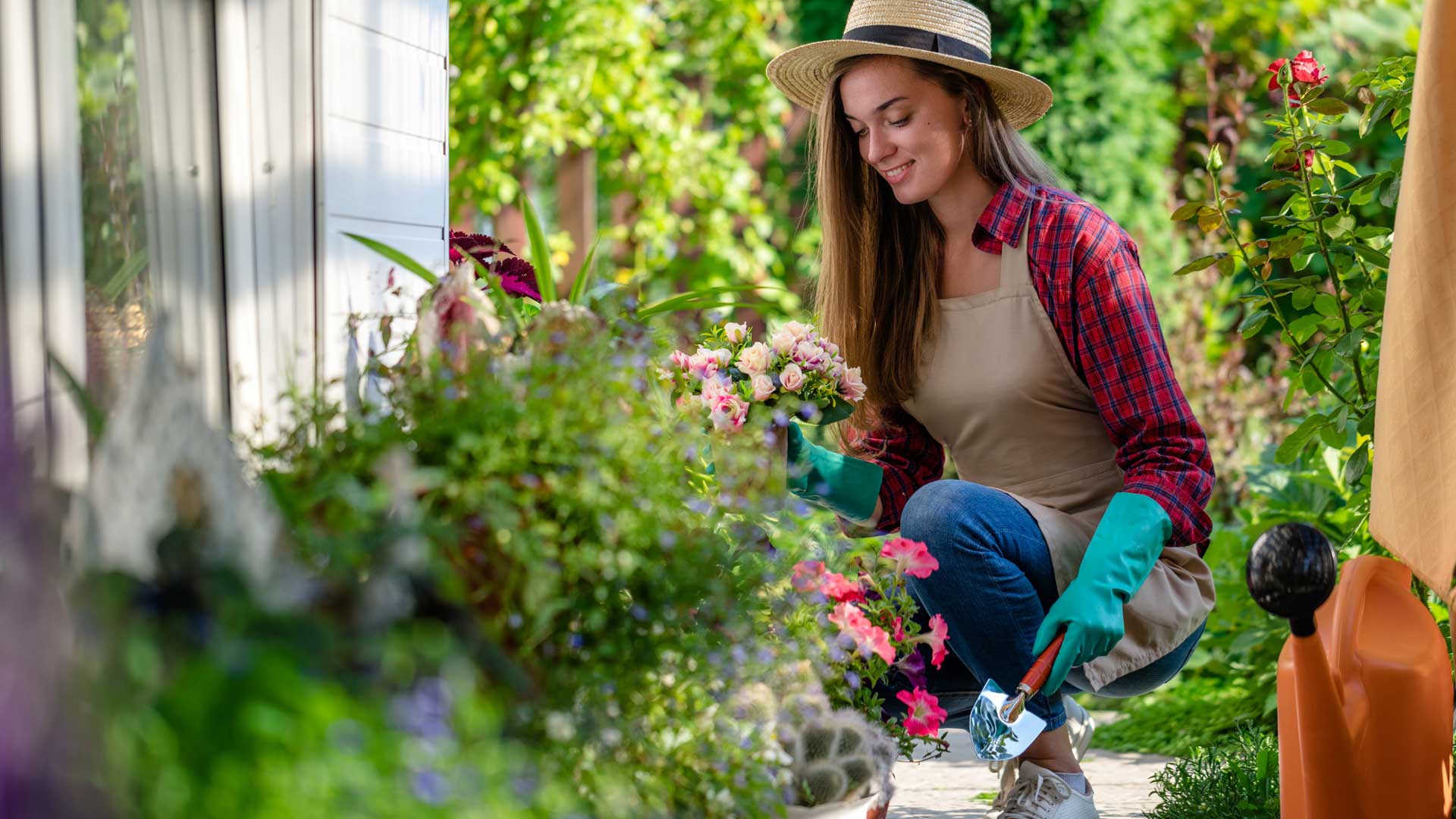Are you dreaming of growing your own garden but don’t know where to start? Fear not! I’ve got some simple and fun gardening tips for beginners to help you turn that dream into a beautiful, leafy reality.
First things first, choose a spot in your yard that gets plenty of sunshine, because plants love soaking up the rays just like we do.
Next, pick out some seeds of your favorite veggies or flowers. You don’t need a lot, just a few to start. Now, it’s time to get your hands dirty. Grab a shovel or a trowel and break up the soil; this will make it easier for your plant’s roots to grow. Mix in some compost or manure to give your plants a boost of nutrition.
Then, plant your seeds according to the instructions on the packet—each plant likes its own space to spread out. Remember, watering is key, but not too much! You want to give your plants a drink without drowning them. Lastly, be patient. Plants take time to grow, but before you know it, you’ll have a garden full of life to show for your effort. Let’s dig in and get our hands dirty with gardening!
Pick the Perfect Spot
Finding the right place for your garden is a bit like a treasure hunt – it’s exciting and it really matters! Just like the best seat in a classroom, you want a spot that makes you smile and is easy to keep an eye on. After all, if your garden is out of sight, it might also be out of mind, and we don’t want your plants feeling lonely.
When you’re on the lookout for this special place, remember that plants love the sun. They use sunlight to make their food, which is a process called photosynthesis. So, hunt for an area that gets plenty of sunshine throughout the day. A good rule of thumb is to choose a spot that gets at least six hours of direct sunlight. That way, your leafy friends can soak up all the energy they need to grow strong and healthy.
But it’s not just about the sun. Think about how water will reach your garden. Is there a hose nearby, or will you need to carry watering cans back and forth? Also, consider the soil. Plants are pretty picky about where they put down roots, and they thrive in soil that’s just right – not too sandy, not too clayey. You might need to do a little digging to see if the soil looks dark and crumbly, which is a thumbs up for gardening!
Lastly, make sure this spot says ‘hello’ to you every day. Maybe it’s outside your kitchen window or by the path you walk each morning. A place you’ll see a lot means your green buddies will always be part of your daily routine. And when you see them often, you’ll remember to care for them, watch them grow, and enjoy the rewards of your hard work.
So, take your time, explore your outdoor space, and find that sunny, happy place that will become your garden’s home. Your future plants are counting on you!
Sunshine is Your Garden’s Best Friend
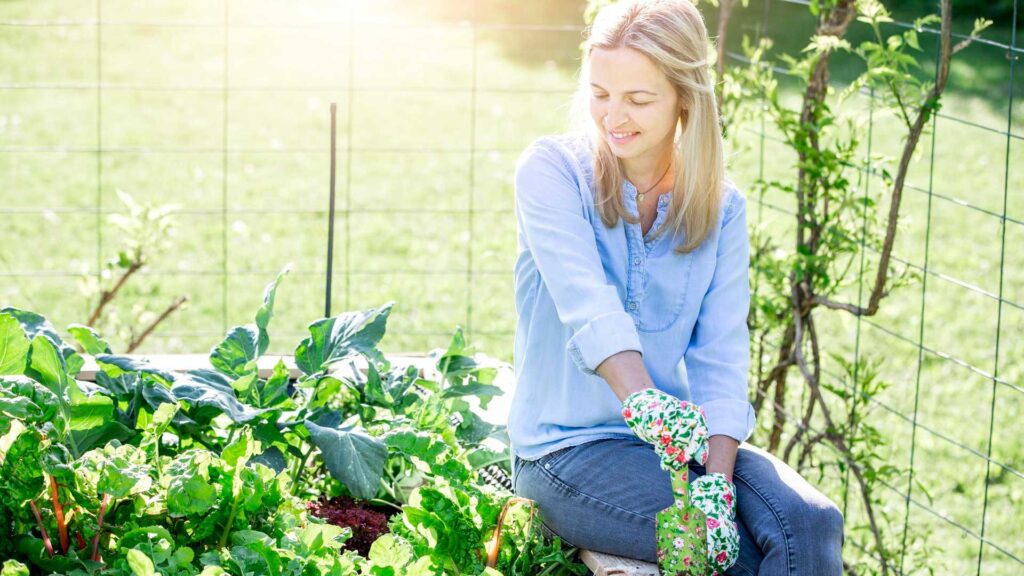
Plants love to sunbathe! Just like you might feel more lively on a sunny day, plants thrive when they soak up the rays. But not all spots in your garden get the same amount of light. To figure out the best places for your plants, become a sun detective! Spend a day watching how shadows move across your space. You’ll notice some areas bask in sunlight almost all day, while others get only a wink of sun.
Most yummy things like veggies, herbs, and fruits are sun worshippers. They need a good, long time in the light to grow strong and give you delicious food. The magic number is at least 6 hours of sun. It’s like a secret recipe for a happy, healthy garden. So, when you’re planning where to plant your tomatoes or strawberries, make sure they’ll get their sunbathing time!
Remember, some plants might need a bit less sun, especially if they’re the type that likes to stay cool. Lettuce and spinach are a bit like people who prefer the shade on a hot day. They’ll do well with a little less sunshine. But for the most part, a sunny spot is the best spot to start your plant family.
It’s also smart to think about the seasons. The sun plays a different game in summer than in winter. Keep in mind that the sun will dance in different paths across the sky as the year goes on. So, a place that’s sunny in June might not be in December. Your plants will need that consistent sunny spot to keep them smiling all growing season long.
So, grab a notebook, draw a simple map of your yard, and track where the sun goes. It’s a fun way to spend your day and it’s super helpful for your garden. When you plant your garden in the right spot, you’ll be amazed at how it grows. Happy planting!
Water is Life
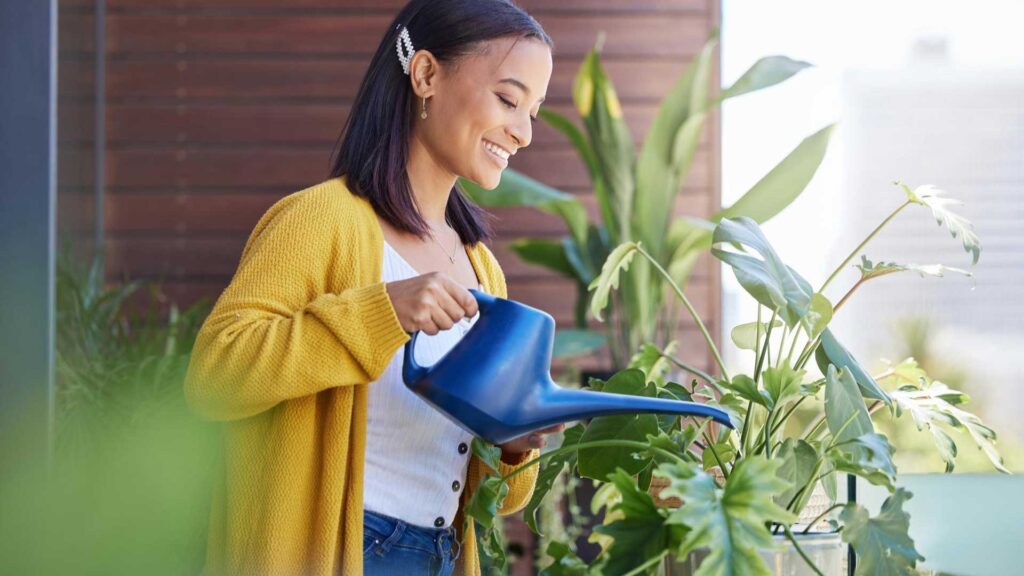
Just like us, plants need water to survive. Whether you have a vegetable patch, a flower bed, or a herb garden, they all need the right amount of water to grow healthy and strong. It’s super handy to have your garden close to a water source, like a hose or a large watering can. This way, you won’t have to lug heavy water over long distances, making your gardening work much easier.
But how do you tell if your plants are thirsty? Here’s a fun trick: simply stick your finger into the soil up to your knuckle. If the soil feels dry to your touch, it’s a signal that your plants could use a good drink of water. Remember, over-watering can be just as bad as under-watering, so this “finger test” is a great way to check if you’re giving your plants just the right amount of water they need to thrive.
Also, consider the time of day when you water your plants. Early morning or late afternoon is best because the cooler air helps to reduce evaporation. This means your plants get to drink up more of the water, and you’re not wasting any of it. Plus, watering at these times helps to prevent the spread of diseases that can occur when water sits on the leaves overnight.
Keep in mind that different plants have different thirst levels. Some plants, like succulents, store water in their leaves and don’t need to be watered as often. Others, like tomatoes, need a steady supply of moisture. So, take a moment to learn about your plant’s specific needs. It’ll make all the difference in helping your garden flourish.
By ensuring your plants get just the right amount of water, you’ll be setting them up for success. Happy, hydrated plants will grow to be strong and produce the beautiful flowers or delicious veggies you’re looking forward to. So, grab that watering can and give your green friends the care they need—it’s a simple step in helping your garden bloom.
Super Soil for Super Plants
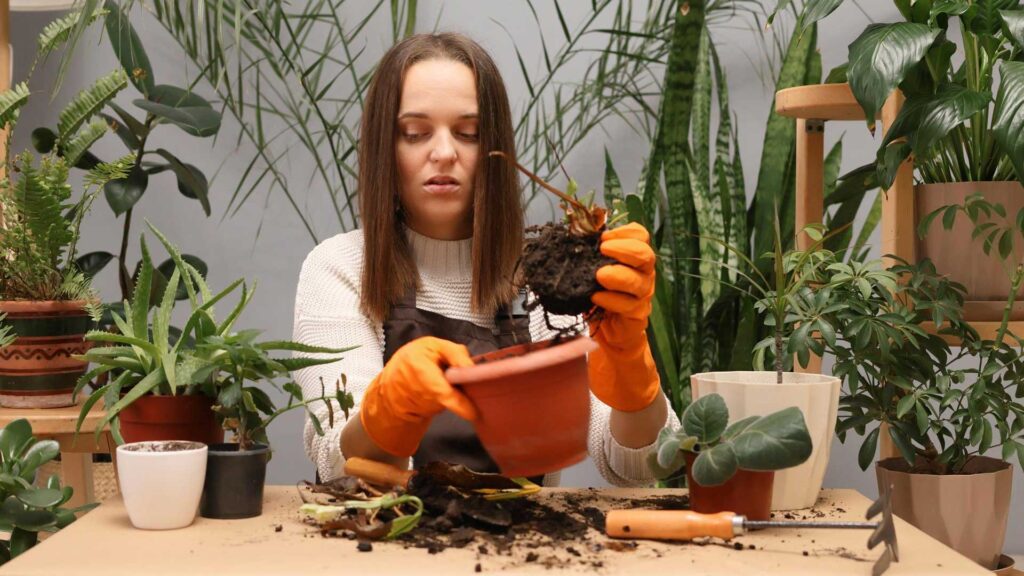
Imagine if you had a super comfy bed filled with the softest pillows and blankets. That’s what awesome soil does for your plants! It’s their cozy spot to grow strong and healthy. To create this super soil, you can mix special garden soil with the regular dirt from your backyard. This combo creates a rich and welcoming environment for your plants’ roots.
Now, if you’re planting in a raised bed, you’ll want to get your hands on a specific type of soil made just for that. Raised bed soil is designed to drain better and keep your plant’s feet—well, roots—dry and happy. Plus, it’s packed with nutrients to help your plants grow up to be big and strong.
But wait, what’s in this special soil? It often has things like compost, peat moss, and vermiculite. These ingredients work together to hold water just right, provide nutrients, and make sure the roots can breathe and grow without getting squished.
So, before you put those plants in the ground, think about their bed. A little effort in making super soil can lead to super impressive plants that are the envy of the neighborhood!
Containers Can Be Cool
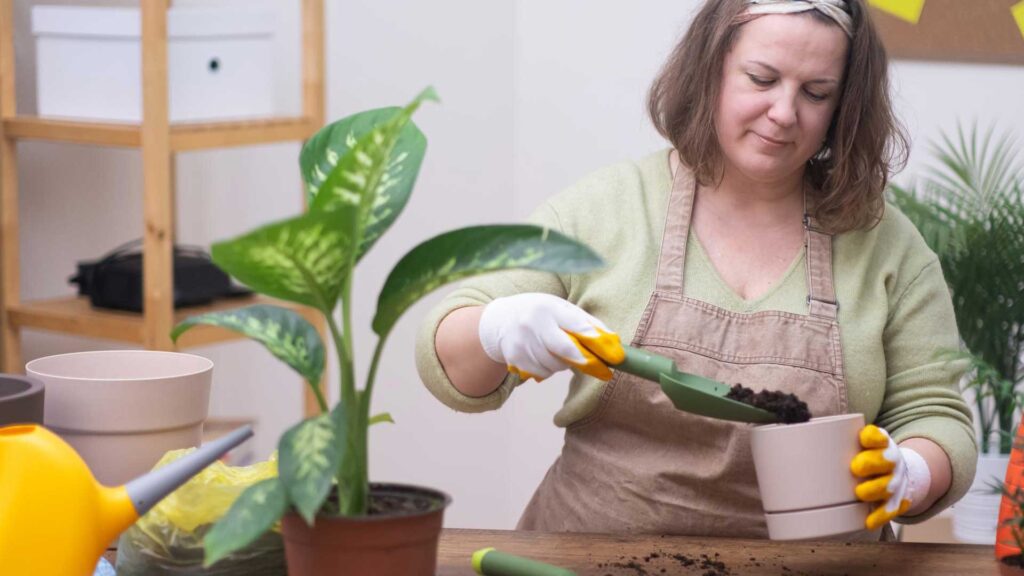
Have you ever looked around your small living space and thought, “I wish I could grow my own plants”? Well, guess what? You can! Even if you don’t have a backyard, you can still be a green thumb. Pots and containers are perfect for people who don’t have much room. They can sit on windowsills, balconies, or even hang from the ceiling!
First things first, you’ll need to pick a pot that’s the right size for your plant. If it’s too small, your plant might feel cramped and won’t grow well. But if it’s too big, your plant’s roots could get lost and not get enough water. So, find a pot that’s just right for the size of your plant. Usually, the pot should be about 1 to 2 inches larger in diameter than the plant’s root ball.
Now, let’s talk about dirt – but not just any dirt. You’ll want to fill your pot with a special potting mix. This isn’t like the soil from your garden; it’s made to help your potted plants thrive. It’s fluffy and light, which means air can get to the roots, and it holds moisture so the roots can drink up water as they need it. Plus, this mix usually has food for the plants mixed in to help them grow strong and healthy.
Remember, watering your container plants is a bit different from plants in the ground. Since they can’t search for water with their roots, you need to make sure they get enough to drink. But be careful not to overwater them! The potting mix should feel like a damp sponge – moist, but not soggy. You can even get pots with drainage holes at the bottom to help get rid of extra water.
So, don’t let a small space stop you from growing your favorite flowers, herbs, or even veggies. With the right container, a little bit of potting mix, and some love, you can have a mini garden that’s easy to care for and looks great too!
Get to Know Your Garden’s Home
Imagine stepping into a shoe store and knowing exactly what size fits you. That’s what understanding your gardening zone is like for planting. A gardening zone, also known as a hardiness zone, is a specific area defined by its climate conditions. This knowledge is crucial because it helps you choose plants that are best suited to thrive in your local weather.
First things first, to discover your garden’s zone, you can easily look it up online by entering your zip code into a gardening zone finder. The United States Department of Agriculture (USDA) provides a detailed map that divides North America into 11 separate zones. Each zone is 10°F warmer (or colder) in an average winter than the adjacent zone. If you’re in the UK, you’ll refer to the Royal Horticultural Society (RHS) Hardiness Ratings instead.
Once you know your zone, picking plants becomes much simpler. Let’s say you’re in zone 5; this means you’ll need plants that can handle chillier temperatures. On the other hand, if you’re in a warmer zone 9, you’ll look for heat-loving greens. It’s a bit like choosing your winter coat based on how cold it gets where you live. You wouldn’t wear a light jacket in a snowstorm, right? Similarly, you wouldn’t plant a tropical flower in a cold zone where it would shiver and struggle.
Remember, while your zone is a great starting point, other factors like soil type, moisture, and sun exposure also play a big role in your garden’s success. It’s about matching the right plant to the right place. Think of your garden as a neighborhood and you’re trying to find the perfect home for each plant friend.
So, before you start planting your dream garden, take a little time to get to know your garden’s home. It’s an easy step that will save you a lot of time and ensure your plants live their best life. Happy planting!
Mulch: A Blanket for Your Plants
Imagine you’re getting ready for bed on a chilly night, and you pull up a cozy blanket to keep warm. That’s what mulch does for your plants. It’s a protective layer spread on top of the soil that acts like a blanket, keeping the ground temperature steady and helping plants sleep tight through hot days and cold nights.
Mulch does a fantastic job at fighting off unwanted plants, which we often call weeds. These weeds are like annoying siblings that want to take all the nutrients and water for themselves. But with mulch, it’s harder for weeds to grow, which means your plants don’t have to compete for food and water.
Besides being a weed warrior, mulch keeps the soil underneath it feeling like a moist sponge. This is super important because when the roots of your plants are happy and hydrated, your plants grow big and strong. Without enough water, they can get thirsty and wilted, just like you would on a super hot day without a drink.
There’s a whole wardrobe of mulch types you can choose from. Some people use straw, which is like a golden blanket that can make your garden look like it’s wearing a sunny hat. Others might use leaves, which are like a quilt made of all different colors and shapes. No matter which type you pick, your garden will look neat and tidy, as if it’s been cleaned up and put in order.
To sum things up, mulch is like a superhero blanket for your plants. It keeps them cozy, stops the bad guys (weeds), and makes sure they have enough to drink. So next time you’re in your garden, remember to tuck your plants in with some mulch—they’ll thank you for it with beautiful flowers and yummy veggies!
Feed Your Plants to Help Them Grow
Just like you need good food to grow, your plants do too! After they’ve been in the ground for a month, give them some plant food to help them be strong and healthy. Remember to follow the directions so you don’t give them too much.

